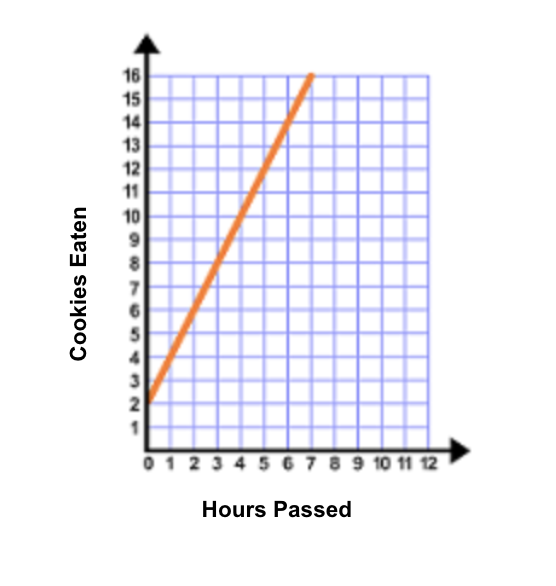Graphing Linear Equations Lesson Plan: Functions
*Click to open and customize your own copy of the Graphing Linear Equations Lesson Plan.
This lesson accompanies the BrainPOP topic Graphing Linear Equations, and supports the standard of using functions to model relationships between quantities. Students demonstrate understanding through a variety of projects.
Step 1: ACTIVATE PRIOR KNOWLEDGE
Display an image of a graph of a linear equation, like this:
Ask students:
- What information might you learn by looking at this graph?
Step 2: BUILD KNOWLEDGE
- Read the description on the Graphing Linear Equations topic page.
- Play the Movie, pausing to check for understanding.
- Assign Related Reading.
Step 3: APPLY and ASSESS
Assign the Graphing Linear Equations Quiz, prompting students to apply essential literacy skills while demonstrating what they learned about this topic.
Step 4: DEEPEN and EXTEND
Students express what they learned about graphing linear equations while practicing essential literacy skills with one or more of the following activities. Differentiate by assigning ones that meet individual student needs.
- Make-a-Movie: Produce a movie that answers this question: How can a linear equation help to predict future outputs in a real-world situation?
- Make-a-Map: Make a concept map identifying the input, output, and two to three ordered pairs for the equation y=3x+4.
- Creative Coding: Code a math problem that involves graphing linear equations.
More to Explore
Graphing Lines Simulation: Students explore the parameters of the slope formula to discover how modifying the graph affects the equation, and vice versa.
Teacher Support Resources:
- Pause Point Overview: Video tutorial showing how Pause Points actively engage students to stop, think, and express ideas.
- Learning Activities Modifications: Strategies to meet ELL and other instructional and student needs.
- Learning Activities Support: Resources for best practices using BrainPOP.












